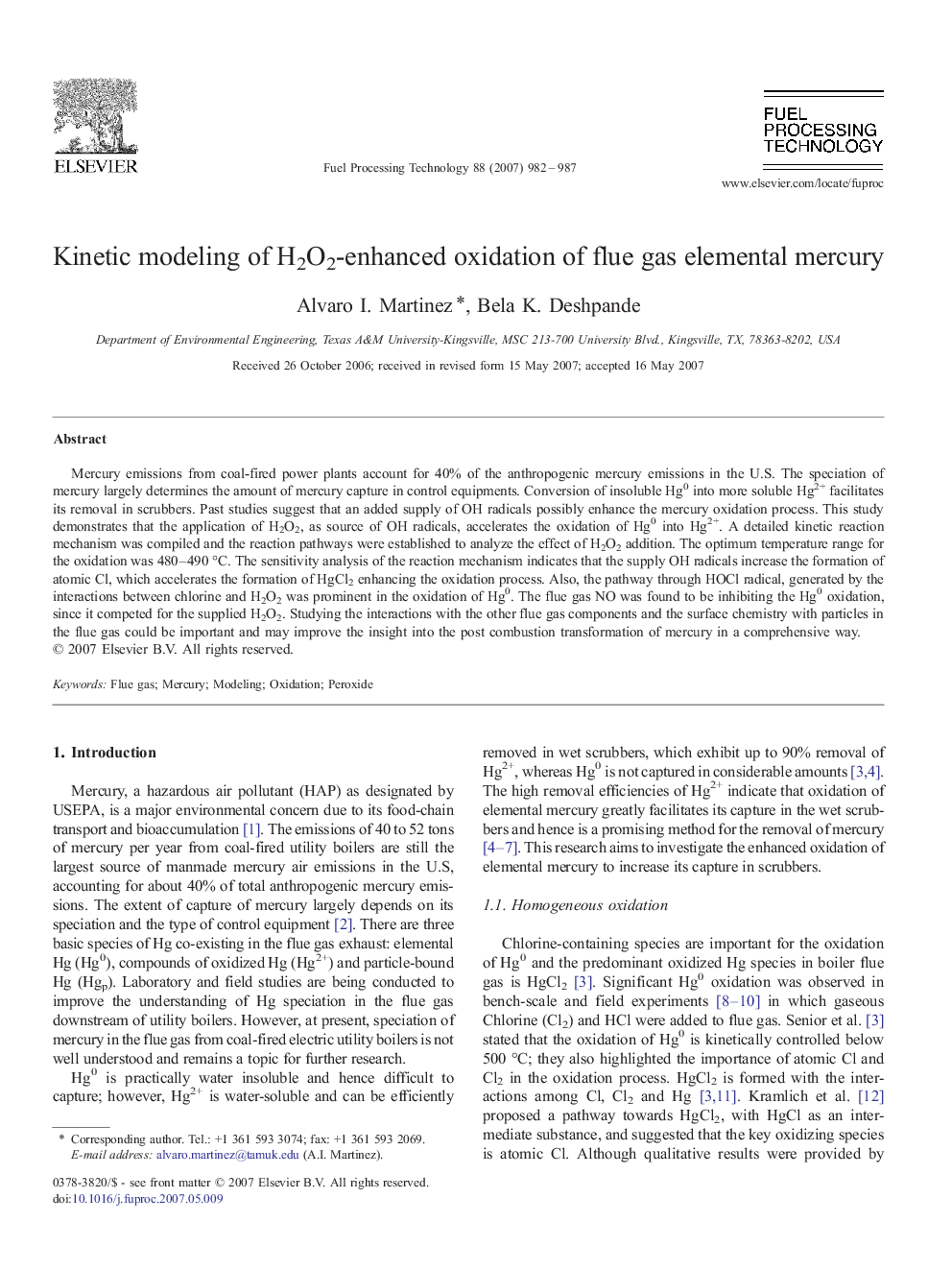| Article ID | Journal | Published Year | Pages | File Type |
|---|---|---|---|---|
| 211416 | Fuel Processing Technology | 2007 | 6 Pages |
Mercury emissions from coal-fired power plants account for 40% of the anthropogenic mercury emissions in the U.S. The speciation of mercury largely determines the amount of mercury capture in control equipments. Conversion of insoluble Hg0 into more soluble Hg2+ facilitates its removal in scrubbers. Past studies suggest that an added supply of OH radicals possibly enhance the mercury oxidation process. This study demonstrates that the application of H2O2, as source of OH radicals, accelerates the oxidation of Hg0 into Hg2+. A detailed kinetic reaction mechanism was compiled and the reaction pathways were established to analyze the effect of H2O2 addition. The optimum temperature range for the oxidation was 480–490 °C. The sensitivity analysis of the reaction mechanism indicates that the supply OH radicals increase the formation of atomic Cl, which accelerates the formation of HgCl2 enhancing the oxidation process. Also, the pathway through HOCl radical, generated by the interactions between chlorine and H2O2 was prominent in the oxidation of Hg0. The flue gas NO was found to be inhibiting the Hg0 oxidation, since it competed for the supplied H2O2. Studying the interactions with the other flue gas components and the surface chemistry with particles in the flue gas could be important and may improve the insight into the post combustion transformation of mercury in a comprehensive way.
